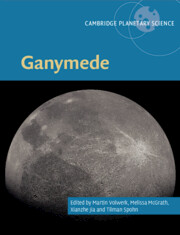32953 results
Clinical Neurorespiratory Medicine
- Coming soon
-
- Expected online publication date:
- December 2024
- Print publication:
- 01 December 2025
-
- Book
- Export citation

Schubert's Piano
- Coming soon
-
- Expected online publication date:
- August 2024
- Print publication:
- 31 August 2024
-
- Book
- Export citation

Ganymede
- Coming soon
-
- Expected online publication date:
- August 2024
- Print publication:
- 31 August 2024
-
- Book
- Export citation

The House that Fox News Built?
- Representation, Political Accountability, and the Rise of Partisan News
- Coming soon
-
- Expected online publication date:
- August 2024
- Print publication:
- 31 August 2024
-
- Book
- Export citation
The Efficacy of Roman Silver in Iron Age Scotland: An Object Trajectory for Spiral Rings
-
- Journal:
- Cambridge Archaeological Journal , First View
- Published online by Cambridge University Press:
- 11 July 2024, pp. 1-20
-
- Article
-
- You have access
- Open access
- HTML
- Export citation
The association between selenium status and cognitive decline in very old adults: The Newcastle 85+ Study
-
- Journal:
- Proceedings of the Nutrition Society / Volume 83 / Issue OCE2 / June 2024
- Published online by Cambridge University Press:
- 03 July 2024, E200
-
- Article
-
- You have access
- Export citation

Modernism and Finance Capital
- British Literature, 1870–1940
- Coming soon
-
- Expected online publication date:
- July 2024
- Print publication:
- 31 July 2024
-
- Book
- Export citation
Clay Mineral Society Report of nomenclature committee 1969–1970
-
- Journal:
- Clays and Clay Minerals / Volume 19 / Issue 2 / June 1971
- Published online by Cambridge University Press:
- 01 July 2024, pp. 132-133
-
- Article
- Export citation
Short Course Notes on Mineralogical Techniques of Asbestos Determination, edited by R. L. Ledoux. Mineralogical Association of Canada Short Course Handbook 3, 1979, 279 pp.
-
- Journal:
- Clays and Clay Minerals / Volume 29 / Issue 6 / December 1981
- Published online by Cambridge University Press:
- 01 July 2024, pp. 459-460
-
- Article
- Export citation
Fabric of Consolidated Kaolinite
-
- Journal:
- Clays and Clay Minerals / Volume 23 / Issue 1 / February 1975
- Published online by Cambridge University Press:
- 01 July 2024, pp. 17-25
-
- Article
- Export citation
Data Handbook for Clay Materials and Other Non-Metallic Minerals, edited by H. van Olphen and J. J. Fripiat, Pergamon Press, Oxford and Elmsford, New York, 1979, 346 + xiv pp. $60.00.
-
- Journal:
- Clays and Clay Minerals / Volume 28 / Issue 2 / April 1980
- Published online by Cambridge University Press:
- 01 July 2024, p. 160
-
- Article
- Export citation
Kaolinite Crystallization at Room Temperature by Homogeneous Precipitation—III: Hydrolysis of Feldspars
-
- Journal:
- Clays and Clay Minerals / Volume 24 / Issue 1 / February 1976
- Published online by Cambridge University Press:
- 01 July 2024, pp. 36-42
-
- Article
- Export citation
Infrared Absorption and X-Ray Diffraction Study of Butylammonium Complexes of Phyllosilicates
-
- Journal:
- Clays and Clay Minerals / Volume 22 / Issue 1 / February 1974
- Published online by Cambridge University Press:
- 01 July 2024, pp. 87-90
-
- Article
- Export citation
Clay Mineral Formation in Sea Water by Submarine Weathering of K-Feldspar
-
- Journal:
- Clays and Clay Minerals / Volume 14 / February 1966
- Published online by Cambridge University Press:
- 01 July 2024, pp. 235-240
-
- Article
- Export citation
Mineralogy and Genesis of the Wealdian Sediments in the Southern Cordillera Iberica (Spain)
-
- Journal:
- Clays and Clay Minerals / Volume 23 / Issue 4 / August 1975
- Published online by Cambridge University Press:
- 01 July 2024, pp. 323-330
-
- Article
- Export citation
Report of the Clay Minerals Society Nomenclature Committee for 1977 and 1978
-
- Journal:
- Clays and Clay Minerals / Volume 27 / Issue 3 / June 1979
- Published online by Cambridge University Press:
- 01 July 2024, pp. 238-239
-
- Article
- Export citation
Synthesis and Properties of Poorly Crystalline Hydrated Aluminous Goethites
-
- Journal:
- Clays and Clay Minerals / Volume 29 / Issue 2 / April 1981
- Published online by Cambridge University Press:
- 01 July 2024, pp. 91-100
-
- Article
- Export citation
Quantitative Fabric of Wet Kaolinite
-
- Journal:
- Clays and Clay Minerals / Volume 14 / February 1966
- Published online by Cambridge University Press:
- 01 July 2024, pp. 271-287
-
- Article
- Export citation
Summary of national and international recommendations on clay mineral nomenclature: 1969–70 CMS Nomenclature Committee
-
- Journal:
- Clays and Clay Minerals / Volume 19 / Issue 2 / June 1971
- Published online by Cambridge University Press:
- 01 July 2024, pp. 129-132
-
- Article
- Export citation



